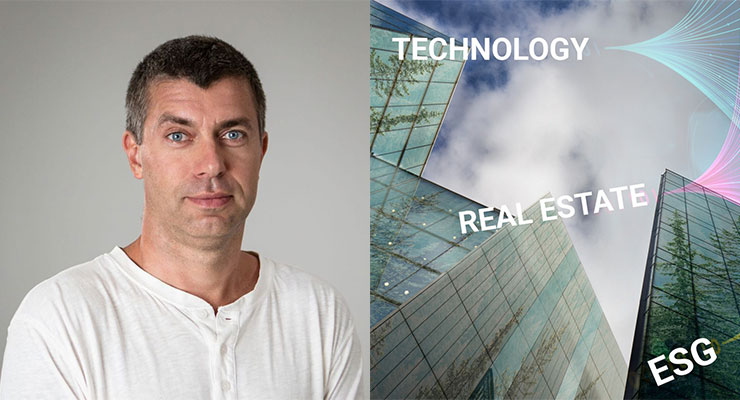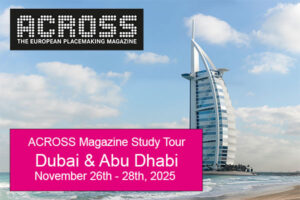By Imre-Gustav Vellamaa
RE is a long term industry. I would not go back to a too distant history (use keyword „oldest known surviving buildings“ at Wikipedia) but nowadays financial ROI calculations for RE projects for ca 15-20 years are typical. For RE owners and operators it also means that any short term market fluctuations (also including Covid-19 in 2021-2022, European energy crisis 2022, high inflation rates 2022…, growing interest rates in 2023… etc) must always be considered as a natural part of business. These fluctuations need to be taken seriously (otherwise your ship might sink fast) but the big ship does not change its main course because of these „temporary challenges“. Thus the question is – are there any game changers in RE industry and what are they? Sure there are! And in this article there is a strong focus on probably the most topical of these – ESG.
ESG is a new playmaker in the world economy.
The first mainstream mention of ESG in the modern context was a 2004 report from the United Nations – titled „Who Cares Wins“. But in reality there was no feel of urgency (exept afew scientists and climate activists) at that time.
7+years ago, in September 2015 the „2030 Agenda for Sustainable Development“ with its 17 SDGs (Sustainable Development Goals) was adopted at the UN Sustainable Development Summit in New York. The same year – in December 2015 – to tackle climate change and its negative impacts, world leaders at the UN Climate Change Conference (COP21) in Paris reached a breakthrough: the historic Paris Agreement.
The EU aims to be climate-neutral by 2050 – an economy with net-zero greenhouse gas emissions. This objective is at the heart of the European Green Deal and in line with the EU’s commitment to global climate action under the Paris Agreement.
This is the framework. But on a company level – is ESG good or bad?
For the study „The ESG ultimatum: Profit or perish“, IBM’s Institute for Business Value (IBV) analyzed results from a survey of more than 20,000 consumers about their attitudes toward sustainability and social responsibility, as well as a survey of 2,500 executives across 22 industries and 34 countries regarding their ESG strategy, approach, and operationalization, expected benefits and business objectives considerations. The study also segmented businesses according to ESG maturity to compare relative performance. According to the results, more than 70% of executives view ESG as a revenue enabler, and that consumers increasingly focus on companies’ sustainability performance when making purchasing and employment decisions.
Without any doubt – there is a strong reason to change a RE track now, in a global, company and personal level! There are 7 years to go until 2030. It does not seem too bad but cleary it is not too long a time for any long term industry that cannot just make some hasty decisions to test if something works or not. Every goal needs decision-based strategies . Every decision needs solutions with a proved track record and partnership relations with a high level of reliability & competence. This all cannot happen overnight!
What is needed in RE industry to reach 2030 and 2050 targets?
ESG strategies lead to use of ESG technologies.
The operation&maintenance of any building has the longest lasting impact on (ESG) strategies. According to various illustrious studies on the subject, for every 1 euro spent on the construction of a building, between 5 and 7 euros are spent on its maintenance (in particular, the English company “Royal Academy of Engineering” has analyzed the typical costs of an office building over thirty years, and has obtained a ratio of 1: 5: 200 relative to construction costs, maintenance costs and operating costs). Also, it cannot be forgotten that there are always different stages of every building’s life cycle: raw material extraction; manufacturing; construction; operation&maintenance; demolition; disposal&reuse/recycling.
Creating ESG strategies helps to act on and measure what is mutually good for profits, people, and the planet. ESG strategies consist of 3 parts:
- Environmental criteria considers environment-related impact and risks – and what the company may or may not be doing to reduce or mitigate them. Examples include: carbon footprint, waste management, pollution, and sustainability efforts that make up its supply chain.
- Social criteria includes social impact generated by relationships with the company’s workers, customers, suppliers, and its communities. Examples include: workplace safety, wellbeing and culture, diversity, equity & inclusion, customer satisfaction, and data privacy.
- Governance criteria details roles, responsibilities, and expectations to ensure good decisions are made for customers, employees, shareholders regulators and the community. Examples include: board member composition, executive pay & rewards, and how a company conducts audits and operates ethically.
Strategies lead to the next stage – what (technologies) to use in order to have the best results and at what stage of the building’s life cycle? This article is focusing on operation&maintenance because of the longest lasting impact on ESG).
There are different solutions for that with different impact, different life cycle and different investment need. What to select? Where to start?
The Total Concept offers a method and a financial tool that can provide the information required by establishing a platform for informed decisions about investments in energy-saving measures (NB! Investment in green energy – renewables – is also considered as an energy saving measure).
The bigger the impact/investment ratio, the faster it has to be taken into use. Naturally it is worth starting with low hanging fruit but it does not mean that nothing else cannot be used in parallel. To the contrary – use as much you can afford (just usually there are limits on human resources, financials etc)!
Low-hanging fruit – PropTech
In general – PropTech (Property Technologies) is about efficiency (like some other tools – a la additional insulation etc) using major technologies of Industry 4.0. for that – Data Analysis and Vizualisation, Internet of Things (IoT), Artificial Intelligence (AI) and Machine Learning (ML) etc. Just a few years ago, you didn’t hear much about Proptech. At least it wasn’t a common term.
Why? To summarize – it just did not matter in RE too much; there was no great need for that. There are always some forerunners when we talk about some new technologies but most of the companies prefer to wait if there is no urgency. Covid-19 opened some more doors as there was suddenly no opportunity to move&meet.
But the closer the ESG deadlines will become, the more important it will be about every single percent of efficiency. PropTech industry is ready for that. The global PropTech market size was valued at 25 billion Us-Dollar in 2021 and is expected to expand at a compound annual growth rate (CAGR) of 15.8% from 2022 to 2030.
How realistic is it to increase the efficiency (energy, operational etc) with some relevant (PropTech) tools? It can be 20%, 30%, 40%, 50%, it is hard to estimate the right number. Just… do it, as these PropTech tools are probably the solutions needing the lowest investment according to the calculations! And always remember – whentalking about CO2 & energy – the greenest energy is energy that has never been produced and consumed.
At the same time it cannot be forgotten that increased efficiency is not enough. Reduction of carbon footprint by 30% with the greenest energy and other efficiency tools means that there is still a need to cover the remaining 70% of energy requirement. Hence there is a remarkable need for renewables and also for more efficient ventilation units or heat exchangers etc, more sustainable construction materials etc to cover all the key economic activities for construction and RE.

Main source for this articel: www.unissu.com; further material from: savills.com, thecorporategovernanceinstitute.com, esgtoday.com, core.ac.uk, kornferry.com, totalconcept.se, unissu.com, grandviewresearch.com
A special thanks goes to Miklós Gyertyánfy (Granit Polus) and Guido Wolf (Zabolis Partners) for your strong comments that helped to improve this article!






